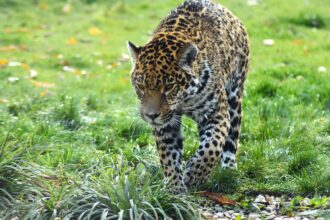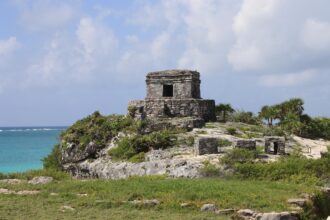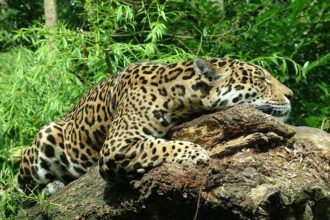Community Engagement in Jaguar Habitat Preservation
Understanding the Jaguar’s Ecological Role
The jaguar (Panthera onca) plays a crucial role in maintaining the ecological balance within its habitat. As a top predator, the jaguar helps regulate prey populations, which in turn supports plant diversity and ecosystem health. In Tulum, a coastal destination in Mexico’s Yucatan Peninsula, jaguar conservation has become intertwined with community efforts and sustainable practices, reflecting an awareness of this majestic species’ significance.
Local Biodiversity and Ecosystem Services
The region surrounding Tulum is rich in biodiversity, home to various species of flora and fauna that rely on a complex web of ecological relationships. The jaguar, often referred to as the “guardian of the forest,” is pivotal in orchestrating these interactions. Its presence ensures the population controls of ungulates and smaller mammals, ultimately supporting a healthier ecosystem. An understanding of these ecological services fosters a sense of responsibility among local communities, driving conservation efforts on multiple fronts.
Collaborative Conservation Strategies
Community voices in Tulum have developed collaborative strategies for jaguar habitat preservation. This involves integrating local knowledge, practices, and beliefs into conservation initiatives, bridging gaps between scientific expertise and traditional ecological wisdom. Local nonprofit organizations work hand-in-hand with residents to create programs aimed at protecting jaguar habitats while promoting sustainable tourism that reflects local culture and ecological principles.
Educational Programs and Workshops
Education plays a vital role in fostering awareness about jaguars and their habitat. Tulum’s initiative incorporates workshops and educational programs tailored to various age groups. These programs elucidate the jaguar’s ecological role and dispel myths surrounding the predator. Engaging storytelling, interactive activities, and field trips into nearby protected areas help instill a sense of pride and responsibility among community members, motivating them to actively participate in conservation efforts.
Sustainable Eco-Tourism Initiatives
Tulum has emerged as a hub for eco-tourism, where community members capitalize on the area’s natural beauty while prioritizing preservation. Local businesses offer eco-friendly tours that highlight jaguar habitats and educate visitors about the species. These tours ensure that revenue generated supports conservation projects and incentivizes residents to protect their natural surroundings. By promoting responsible tourism, the community reduces the ecological footprint while showcasing their commitment to habitat preservation.
Protecting Corridors and Local Ecosystems
One of the primary goals of Tulum’s conservation efforts is to safeguard jaguar corridors—natural pathways connecting different habitats necessary for the species’ survival. These corridors enable jaguars to migrate, find food, and mate without facing human encroachment. Community members actively participate in site assessments, identifying critical areas for preservation and advocating for local policies that support land protection. Collaborative work with governmental authorities ensures that these corridors are recognized and protected.
Incorporating Indigenous Knowledge
Indigenous communities around Tulum hold invaluable traditional ecological knowledge essential for jaguar conservation. This knowledge encompasses sustainable land management practices passed down through generations. By integrating indigenous perspectives, conservationists can implement more effective strategies tailored to the unique dynamics of the region. The combination of scientific research and indigenous wisdom fosters a holistic approach to preserving both the jaguar and its habitat.
Monitoring Programs and Research Partnerships
Establishing robust monitoring programs is crucial for understanding jaguar populations and their behavior. Community-led initiatives involve local residents as citizen scientists. By training them to collect data, researchers empower the community and promote active involvement in conservation. Collaborative research partnerships with universities and conservation organizations further enrich the data collected, contributing to a comprehensive understanding of jaguar ecology in Tulum.
Adopting Climate-Resilient Practices
The impact of climate change poses significant threats to jaguar habitats. Community initiatives in Tulum emphasize the need for climate-resilient practices, such as sustainable agriculture, water conservation, and reforestation. By adopting these practices, residents enhance both their livelihoods and the overall health of the ecosystem. The integration of renewable energy sources is also promoted, reducing dependency on fossil fuels and aligning with broader climate change mitigation efforts.
Community Empowerment and Leadership
Empowering local communities to take the lead in conservation is paramount for long-term success. Tulum’s efforts emphasize forming community leadership roles where individuals are trained as conservation advocates. These leaders become key voices, representing their community’s interests, negotiating with external stakeholders, and fostering a united front for jaguar habitat protection. Their resilience and determination drive the movement forward, encouraging further participation.
Success Stories and Impact
Examples of successful jaguar conservation projects in and around Tulum highlight the positive impact of community involvement. One notable initiative involves the reforestation of degraded areas, resulting in increased habitat availability for jaguars and other wildlife. Attaining local support and participation in these projects serves as a model for other regions facing similar challenges. As community members witness the tangible benefits of their efforts, such as increased biodiversity and improved quality of life, they are motivated to continue preserving their natural heritage.
Future Directions and Challenges
While Tulum’s community-driven approach to jaguar habitat preservation showcases promising results, challenges remain. Continued urbanization, agriculture expansion, and climate change threaten established habitats. Ongoing education and engagement are necessary to mitigate these threats. Residents must remain vigilant, advocating for sustainable practices and policies that ensure the future viability of both jaguars and their habitats.
Community Resilience and Adaptation
As climate patterns shift and pressure on natural resources escalates, the community of Tulum is required to adapt continually. The resilience of community members in addressing these challenges reflects their commitment to conservation. Engaging with diverse stakeholders—including tourists, government bodies, and environmental organizations—is vital in fostering solidarity and a collective vision for the preservation of jaguars and their ecosystems.
Conclusion: A Collective Responsibility
Ultimately, the community’s approach to jaguar habitat preservation in Tulum exemplifies a broader movement towards integrating conservation and community well-being. Through collaboration, education, and sustainable practices, Tulum stands as a beacon of hope for jaguar conservation. It demonstrates how local action—fueled by passion, dedication, and knowledge—can create lasting positive impacts on both wildlife and communities. The future of the jaguar in Tulum will depend on the continued commitment of its people to champion their natural heritage and ensure its survival for generations to come.







